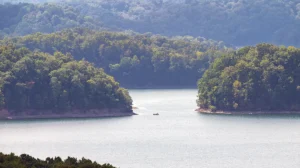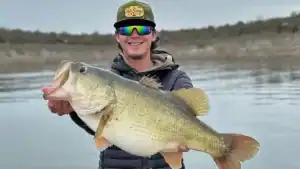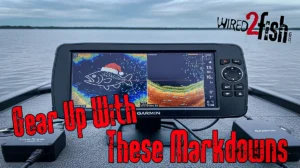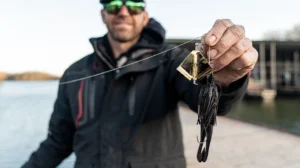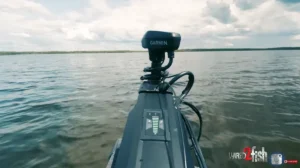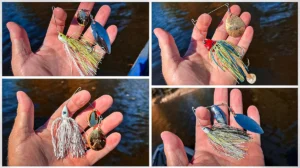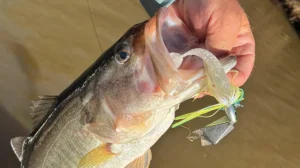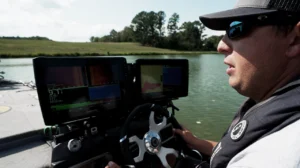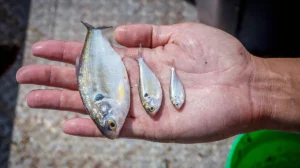Before he was a two time Bassmaster Classic and four time FWC qualifier, Clark Reehm was an Army brat that made multiple moves throughout his childhood. He considers himself lucky that during his high school years he was just a stone’s throw from Toledo Bend, and a short drive from the Sam Rayburn Reservoir. They’re two of the most legendary and consistently superior tournament lakes in the country, chock full of big bass.
When he finally had authority to pick where he’d set down roots, there was no question it would be where Texas and Louisiana meet, but ultimately, he chose to focus his guide service on Rayburn.
“Toledo is an incredible lake, but I always seemed to like Rayburn better,” he said. “It’s a bit easier to figure out and definitely easier to get around. But the best thing about it is that it’s the perfect place to teach and learn electronics. If you find them on the graph, they bite.”
It also has fewer variables than most other great fisheries.
“You don’t have to worry about current, and you don’t have to wait on the moon and the stars to line up. It’s not dependent on the season or the time of year,” he said. “It’s good all 12 months – and it’s one of the few lakes where there’s always a deep bite, always a shallow bite, and always a mid-range bite.”
Oh yeah. It’s also loaded with true trophy bass, double digits and ShareLunkers.
That’s why the tournament circuits keep coming back and it’s why you need to make a pilgrimage to one of bass fishing’s holy lands.

| Location | East Texas, 2 hours from Houston and Shreveport |
| Size | 114,500 acres at full pool, the largest lake wholly within Texas |
| Main Water Source | Angelina River, a tributary of the Neches River |
| Gamefish Species | Trophy largemouth bass along with smaller spotted bass |
| Forage | Gizzard shad, crawfish, bluegill, yellow bass, crappie |
| Opened for Fishing | 1965 |

The Ultimate Bass Lake
If you wanted to create a stereotypically great bass lake, you would create Rayburn, Reehm says.
“It has wood, grass, brush piles, big main lake flats, creeks and road beds,” he says. “It also has an abundance of bait and the bass get big – you can fully prepare to catch a 10 pounder on your next throw.”
Moreover, while seasonal cold fronts affect every southern reservoir, the dips in Sam Rayburn’s productivity are less severe. The water rarely dips below 48 degrees, and even then, it’s only temporary.
“It simply doesn’t have down cycles,” Reehm said. “That’s a testament to the lakes that maintain their hydrilla. Some years, there’s not a lot of it, but it always seems to bounce back. And it has a huge population of threadfin shad. There are some big gizzard shad, but not huge populations of them like on Lake Fork or some of the TVA lakes, But all of those shad mean that the fish are conditioned to feed non-stop.”

Learning the Big Pond
At over 100,000 acres, with several major tributaries and seemingly endless stretches of prime cover, attacking Sam Rayburn can be daunting for first-timers. One way to gain confidence, of course, is to hire a guide, but Rheem says with a little bit of internet research and careful boat piloting, it’s possible to identify key areas that are likely to produce.
“Rayburn has probably had more major tournaments on it than any other lake,” he said. “It gets a lot of intelligent pressure, so you’re probably not going to find some magic honey hole. Focus on the well-known areas to start, the community holes. Those are the same major areas where tournaments are consistently won, so if you’re in an area and you’re not seeing other boats, you’re probably not around the biggest populations of fish. And don’t worry about other boats – there are so many fish in the good areas it doesn’t matter.”

General Seasonal Patterns
During the pre-spawn, it’s possible to get healthy bites with an old-school Bill Lewis Rat-L-Trap. “It’s not called Rayburn Red for nothing,” Reehm said. He focuses on big main lake drains, the travel routes that fish use to migrate into spawning areas.”
Once the fish start to spawn, much of the lake is rarely clear enough to sight fish, but just about any pocket holds bedders, and in the typical high water conditions you can focus on flooded bushes, willows, and the inside grass lines.
“At times it’s almost comically easy,” he said.
The variety usually increases during the post-spawn. There’s often a shad spawn, so you can focus on that, typically in the early morning hours. Some of the food source remains shallow all the time, so the fish don’t need to back off. Meanwhile, others start to retrace the drains that they followed in, heading out to offshore summering holes.
“And a lot of them move out to the brush,” Reehm explained. “There are more crappie guides than bass guides on the lake, and there’s tons of brush.”
He said that summer is typically the hardest time, not only because many fish suspend, but also because the Texas heat can be debilitating. There’s usually a topwater bite early and an offshore bite later, though. The fish still have to eat.
“In September, it’s still hot,” Reehm continued. “But that’s when you start to see the fall patterns. You’re waiting on the little cold fronts and when it dips into the 70s you can see the big mega clouds of bait on your screen and it’s no problem to catch 70 to 100 out of the school. It’s all about shad.”
Indeed, that’s what Reehm may like best about Sam Rayburn. As he’s worked to hone his skills with electronics, few fisheries hold the same seek and destroy possibilities that exist at Big Sam.
“There are massive schools, and unlike some other places, they still feed,” he said. “They’re dumb and easy to catch. Forward facing sonar has dominated a lot of events here in recent years, and it produces some mega bags, but you rarely have to go deeper than 30 feet deep on Rayburn to catch a bass.”

Ups and Downs
If you want to catch a giant at Rayburn, it’s possible any time of year, but Reehm says your best chance is during the prespawn: from January until early April.
“The big females have just come off gorging on shad. They’re up and accessible and full of eggs. They’re usually grouped up, too. Numbers may be better in the fall and winter, but that ‘s the best time if you want a trophy fish.”
He said that navigation isn’t as hard as on Toledo Bend, simply because there’s less standing timber, and less of it broken off just below the surface. If the water is up, it’s especially easy to run with a little care. When in doubt, get one of the multiple chips available marking the best routes to run or watch one of the many YouTube videos on the topic. It can literally be a lifesaver. He also cautioned the need to watch out for wind.
“That’s the worst thing you’ll deal with — a northwest or southeast wind — because of the way the lake lays out, but overall, people seem to think it’s a lot more dangerous than it is.”

Reehm’s Top Five Baits for Fishing Sam Rayburn
One of the great things about fishing Big Sam is that you can catch quality bags of fish from shin-shallow to 30 feet deep much of the year, which gives anglers opportunities to flex their rods with lots of different lures. Here are five Rayburn Classics that Clark Reehm always has in his Skeeter:
- Carolina Rig – Usually with a 3/4- or 1-ounce Epic Tungsten Weight and a creature bait like a Big Bite Baits Creature. “More money has been won at Rayburn on a Carolina Rig than anything else.”
- Deep-diving crankbait – “It’s a classic structure lake and more tournaments and big fish awards have been won on a crankbait than anything else.”
- Yamamoto Senko – “It’s hard to beat and you can catch as many fish shallow with it as you want.”
- Frog Factory Ribbit – “It used to be made by Stanley and was developed in East Texas. It enables you to cover lots of water, especially around heavy cover.”
- Bill Lewis Rat-L-Trap – “A 1/2-ounce model can get it all done. For year-round fishing I like Chrome Blue or Gold, but as I said before, there’s a reason they call it Rayburn Red.”


